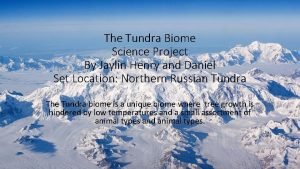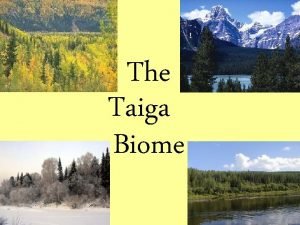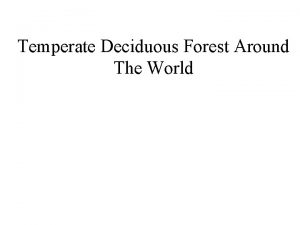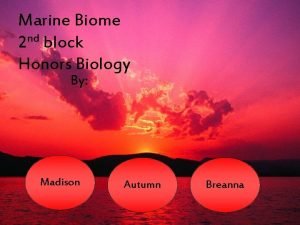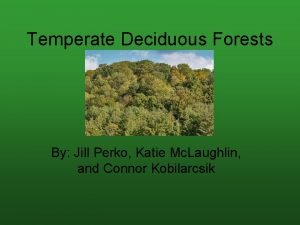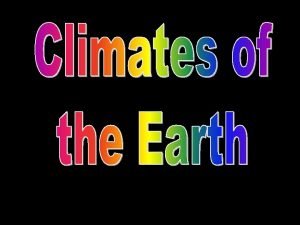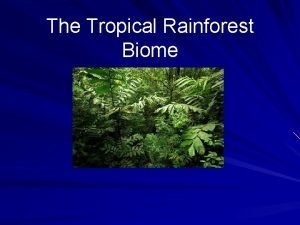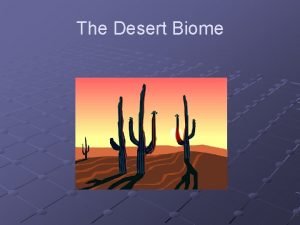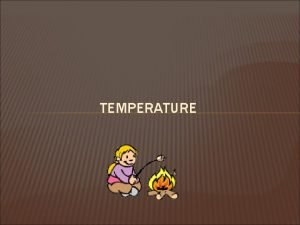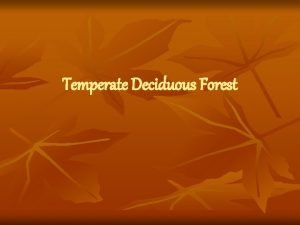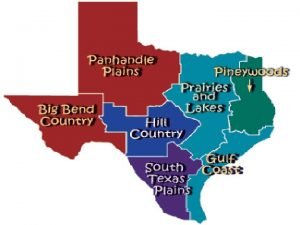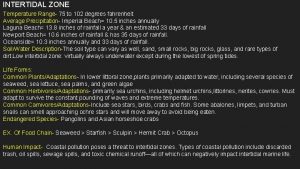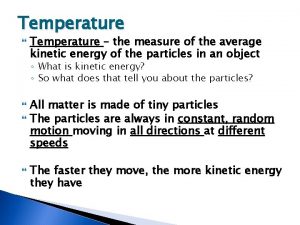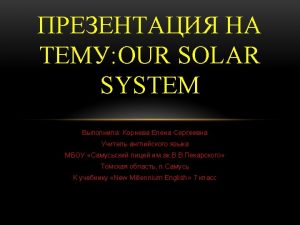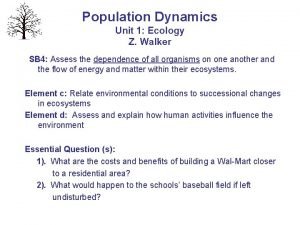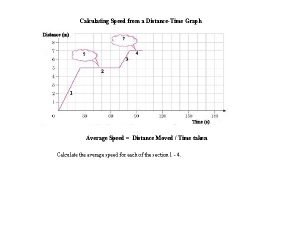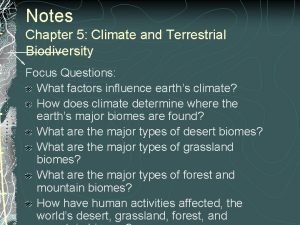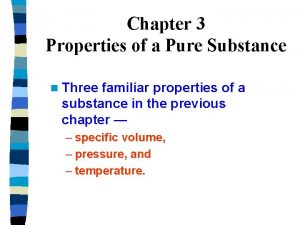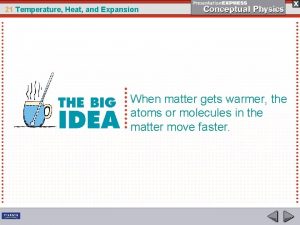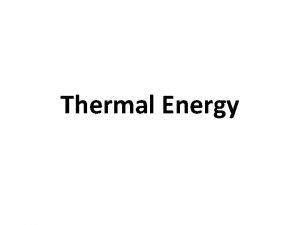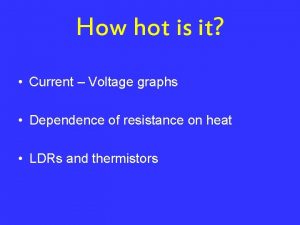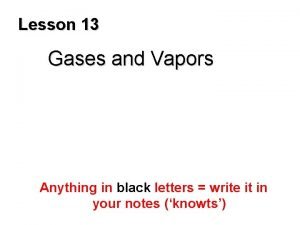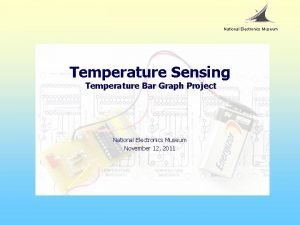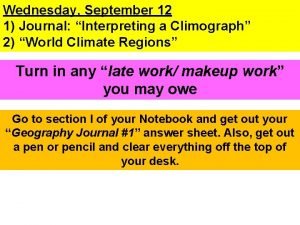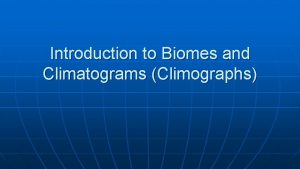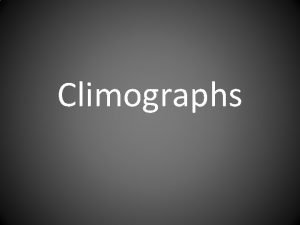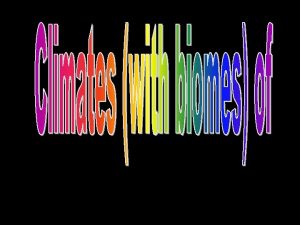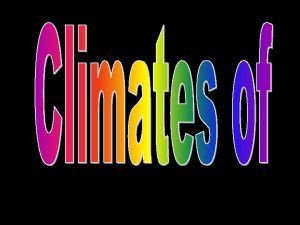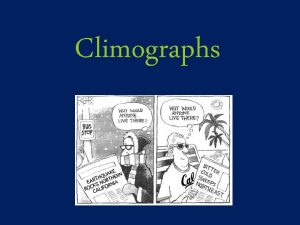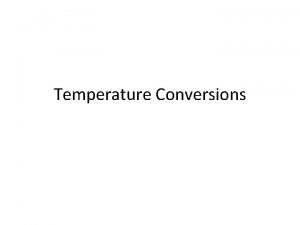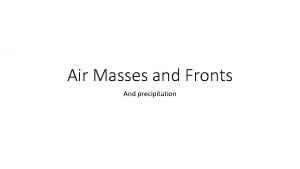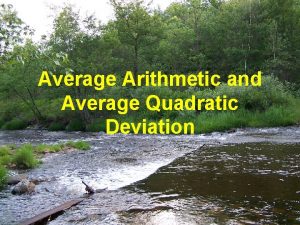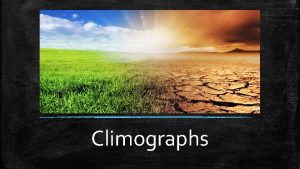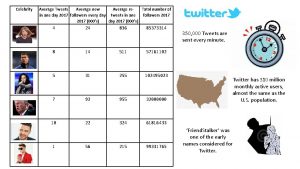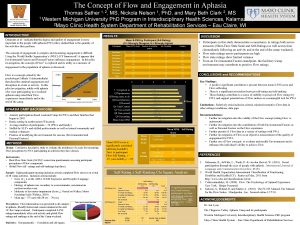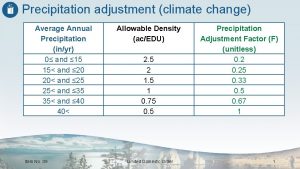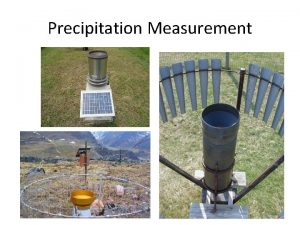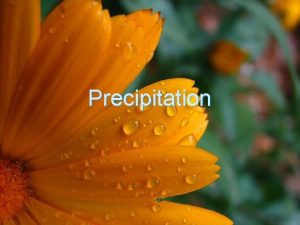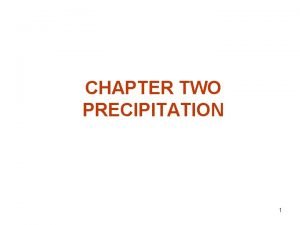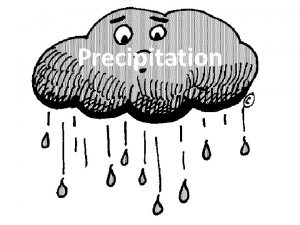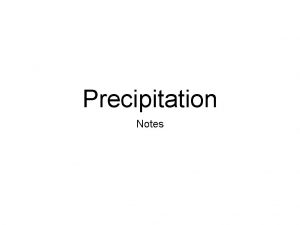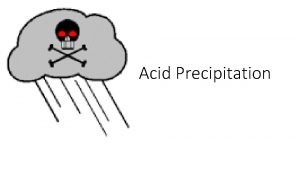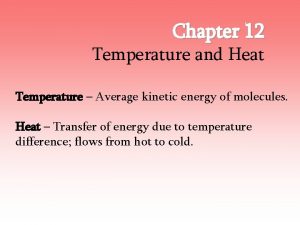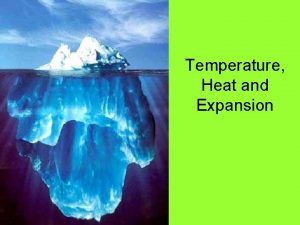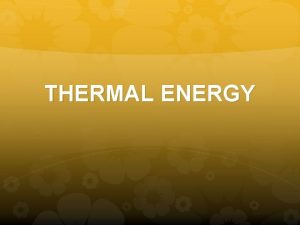Climograph Graph that indicates average temperature and precipitation
















































- Slides: 48


Climograph • Graph that indicates average temperature and precipitation for a place. • Line Graph shows temperature • Bar Graph shows precipitation If the line graph goes up in the middle – it is showing a place in the northern hemisphere. If the line graph goes down in the middle – it is showing a place in the southern hemisphere. If the line is fairly straight – it is showing a place that is near or on the Equator.


• Description – hot and wet throughout the year. • Precipitation Wet – 80 + inches a year - Rains daily • Temperatures about 80 all year • vegetation - Lush and diverse – 6% of earth, but more than half the plant and animal species. Canopy – layers of broadleaf evergreen trees. Amazon River Basin Congo River Basin Leaching – continuous rain pulls the nutrients out of the soil (not arable) Indonesia • Biome: Rainforest

Rio Temperatures are about even so it must be near the Equator. Tons of precipitation every month. Belem


• Description – grassland with distinct dry and wet seasons. Winter is dry. • Summers have 20 – 100 inches of precipitation a year. Winter is dry. Dry season is dramatic. • High year round temperatures around 80. • Vegetation – clumps of coarse grass and few trees. • Llanos of Venezuela • Caribbean Islands • Serengeti of Tanzania • Biome: savanna

COLD DRY Darwin Dakar Near the Equator



• Description – dry, largely treeless grassland. • Location – Low & mid latitudes. Border deserts & interior of continents (leeward side) • Precipitation 10 – 20 inches a year • Vegetation - Grassland with few trees or cactus. Desertification - spread of desert-like conditions to semi-arid areas is a serious problem in the Steppe • Biome: grassland

Alice Spring Northern Southern Hemisphere


Description – dry area with sparse plant life that covers about 1/3 of the world’s land. There are two types of terrain: reg – desert pavement (gravel, rocks, and sand) and erg – dunes • Precipitation – 10 in. or less a year • Temperatures: Desert does not mean hot – it means dry!!! Day and night temperatures vary drastically. • Vegetation - scrub and cactus Oasis is an area in the desert where water is available. • Biome: Desert / Desert Scrub

Cairo Tehran Lima



• Description – ocean winds bring cool summers and damp winters. • Location – 30 -60º on the west coast in N. Hemisphere and east coast in S. Hemisphere. Located on Westerlies. Precipitation: Ocean air brings abundant rainfall. • Vegetation: large coniferous – evergreen forests called temperate rainforests and mixed forests - both coniferous and deciduous trees. • Biome: Deciduous Forest

London Sydney Abundant rainfall year. High around 70. Low around 40. Vancouver


• Description – mild, rainy winter and hot sunny summers. • Precipitation: 15 – 30 in (mostly in the winter) • Vegetation - Chaparral – underbrush, woody bushes and short trees – cork, olives, grapes, etc. Leathery leaves hold moisture • Biome: chaparral

COLD WET Perth Athens Jordan Santiago COLD WET


• Description – short, mild winters and nearly year round rainfall. hurricanes & typhoons. • HOUSTON is in HST • Precipitation: year round Vegetation – fruits, rice, vegetables, inland grasslands, and mixed forests - deciduous and coniferous trees. Biome: Deciduous Forest

Buenos Aires Southern hemisphere Shanghai Northern hemisphere


• Description - 4 distinct seasons. Storms and continentality - far in the interior of continents influence climate. • Location - interior mid-latitude in N. Hemisphere • Temperatures: winters longer as you travel north and inland. • Vegetation: Agriculture has replaced natural prairie grass, and short coniferous forests. • Biome: Deciduous Forest

Moscow Helsinki Northern Hemisphere



• Description – bitterly cold winter and short, cool summers. • Temperatures: Widest temperature range between summer and winter. Vegetation: Taiga (Russian word forest) a boreal forest – needled evergreens. • Permafrost – only a small layer of the ground thaws. • Biome: Taiga

Omsk Saskatoon Northern Hemisphere


• Description – very cold with polar night for ½ of the year. • Location – far north in the northern hemisphere • Temperature: Cold: rarely above 50° - at least 9 months below freezing – some below 0º • Vegetation: Short bushes, short grass, mosses, and lichen. permafrost bogs in summer. • Biome: Tundra

Freezing Northern Hemisphere


• Description – snow and ice cover this area up to 2 miles thick • Polar night – 6 months a year the sun does not rise above the horizon (24 hours dark) • Polar desert – moisture in the air does not reach the dew point, so it does not precipitate. Far away from Equator (dry & cold as move away) • Temperature: Below freezing all year - Many months below zero. • Vegetation: Possibly lichen and moss

Freezing Thuls Air Force Base Northern Southern Hemisphere


• Located in mountain systems throughout the world • Precipitation – affected by the Orographic Effect. Leeward is dry – windward is wet. • Temperature – varies with elevation – for every 1, 000 feet increase in elevation the temperature decreases 3. 5 • Vegetation – usually mixed forests at the base. Meadows with small trees, shrubs, and wildflowers line the mountainsides. • Biome: Alpine

Northern Hemisphere Near Equator Mexico City



• Hot land. • 0 - 2, 500 ft. • 68 -91ºF. • Grow: rice, Banana, sugar cane, cacao, pineapple • Forests: Sea level – swamps up to dry forests around 2, 000 feet

• Temperate land. • 2, 500 – 6, 500 ft. • 60 -70ºF. • Grow coffee, cotton, tobacco, citrus fruit, squash, beans, and corn • Forests: Wet forest

• Cold land. • 6, 500 – 10, 000 ft. • Less than 60 degrees. • Grow grains such as wheat, oats, rye, and barley, apples, and also potatoes. • Forests: Cloud forests

• Most above the tree line. • 10, 000 – 14, 000 feet • temperatures: 20 – 55º • Grow: Grassland hardy shrubs. • Elfin forest at lowest elevations • Grazing of sheep, alpacas, and llamas.

• Snow line and above. • Above 14, 000 feet • Below 20º. • Nothing grows here except maybe a few moss and lichen in summer.
 Gravimetry steps
Gravimetry steps Co precipitation and post precipitation
Co precipitation and post precipitation Bearberry adaptations
Bearberry adaptations Taiga average temperature
Taiga average temperature Temperate deciduous forest plant adaptations
Temperate deciduous forest plant adaptations Marine biome average precipitation
Marine biome average precipitation Temperate deciduous forest climate
Temperate deciduous forest climate Northern hemisphere climograph
Northern hemisphere climograph Ngoại tâm thu thất chùm đôi
Ngoại tâm thu thất chùm đôi Block nhĩ thất cao độ
Block nhĩ thất cao độ Thơ thất ngôn tứ tuyệt đường luật
Thơ thất ngôn tứ tuyệt đường luật Thơ thất ngôn tứ tuyệt đường luật
Thơ thất ngôn tứ tuyệt đường luật Walmart thất bại ở nhật
Walmart thất bại ở nhật Tìm vết của đường thẳng
Tìm vết của đường thẳng Con hãy đưa tay khi thấy người vấp ngã
Con hãy đưa tay khi thấy người vấp ngã Tôn thất thuyết là ai
Tôn thất thuyết là ai Gây tê cơ vuông thắt lưng
Gây tê cơ vuông thắt lưng Sau thất bại ở hồ điển triệt
Sau thất bại ở hồ điển triệt Branches of motion
Branches of motion Difference between curie temperature and neel temperature
Difference between curie temperature and neel temperature Difference between curie temperature and neel temperature
Difference between curie temperature and neel temperature Ferromagneti
Ferromagneti Rainforest temperature range
Rainforest temperature range Desert biome location
Desert biome location Temperature is the measure of the average
Temperature is the measure of the average Rainfall in temperate forest
Rainfall in temperate forest What are the characteristics of the piney woods
What are the characteristics of the piney woods Intertidal zone average temperature
Intertidal zone average temperature Measure of average kinetic energy
Measure of average kinetic energy Clifden ireland average temperature
Clifden ireland average temperature Diameter of mercury
Diameter of mercury Temperature is a measure of the average
Temperature is a measure of the average Ecological succession
Ecological succession 1-4 practice extrema and average rates of change
1-4 practice extrema and average rates of change How to calculate average speed from a distance time graph
How to calculate average speed from a distance time graph The scatter graph shows the maximum temperature
The scatter graph shows the maximum temperature The scatter graph shows the maximum temperature
The scatter graph shows the maximum temperature Amazon rainforest temperature graph
Amazon rainforest temperature graph Pure substance examples
Pure substance examples Microscopic slush in water tends
Microscopic slush in water tends Heat and temperature venn diagram
Heat and temperature venn diagram Ldr current voltage graph
Ldr current voltage graph Vapor pressure
Vapor pressure Temperature bar graph
Temperature bar graph Wait-for graph
Wait-for graph Bangkok climograph
Bangkok climograph Tundra climograph
Tundra climograph Climographs
Climographs Climograph southern hemisphere
Climograph southern hemisphere


